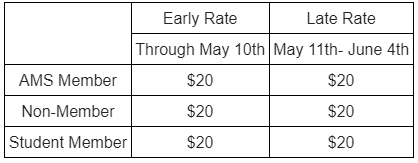The engineering community has firmly established what it takes to build wind resistant buildings. In fact, there is guidance to build resistance against all prominent hazards, including a tornado resistant building design, within the flagship American Society for Civil Engineers building loads standard (ASCE7). The challenge we now face is that adopting this standard into building codes on the state and municipal level is difficult; roughly 40% of the U.S. has no modern building code, including many high risk areas from hurricanes and tornadoes. There are many reasons why communities don’t adopt new codes. These can range from lack of knowledge about their benefits to financial reasons. However, there are several organizations devoted to outreach to incentivize resilient buildings and modern codes, including the Insurance Institute for Business and Home Safety (IBHS), the Federal Alliance for Safe Homes (FLASH), and Smart Home America.
The AMS Committee on Engineering Resilient Communities would like to use the information provided by one or more of these institutions with the goal to help inform the meteorological community about the impacts of severe winds on buildings, methods to improve building resilience and ideas on how our community can inform society about building resilience. We intend to accomplish our goals, in part, through conducting this course. Our intended outcome is to leverage the huge outreach potential that the meteorological community provides to inform our partners on the elements of building resilience by providing information and tools that can be easily used. This four hour course will begin that process by providing information, and materials to assist our participants to provide effective outreach to their constituents.
The proposed goals of this short course align best with the AMS strategic goal “To support collaborative national and international programs that benefit society, help protect lives, build economic value, and foster resilience”.
Registration rates:

REGISTER NOW
Registration deadline is June 4, 2024
Course Description:
Participants will take with them the following concepts, applications, understandings. An understanding of:
- the attributes of wind most useful in determining building loads and eventual performance,
- how wind interacts with buildings, bluff body aerodynamics,
- how buildings fail with regards to structural elements, and how building function can be adversely impacted by the loss of nonstructural elements,
- how building damage can be mitigated by a variety of steps that can be more affordable than realized,
- and what the myths are and how to dispel them.
Participants will be able to convey to others that there are actions that can be taken to improve the resilience of their homes and businesses no matter their economic means. Finally, the students will leave with resources to assist in their activities in research, outreach, or general knowledge.
VIEW AGENDA
Registration for this course will open in mid-April.
If you have questions regarding the course, please contact James LaDue.
Instructors:

Ian Giammanco
Insurance Institute for Business and Home Safety

Sarah Dillingham
Insurance Institute for Business and Home Safety

Jennifer Spinney
York University




